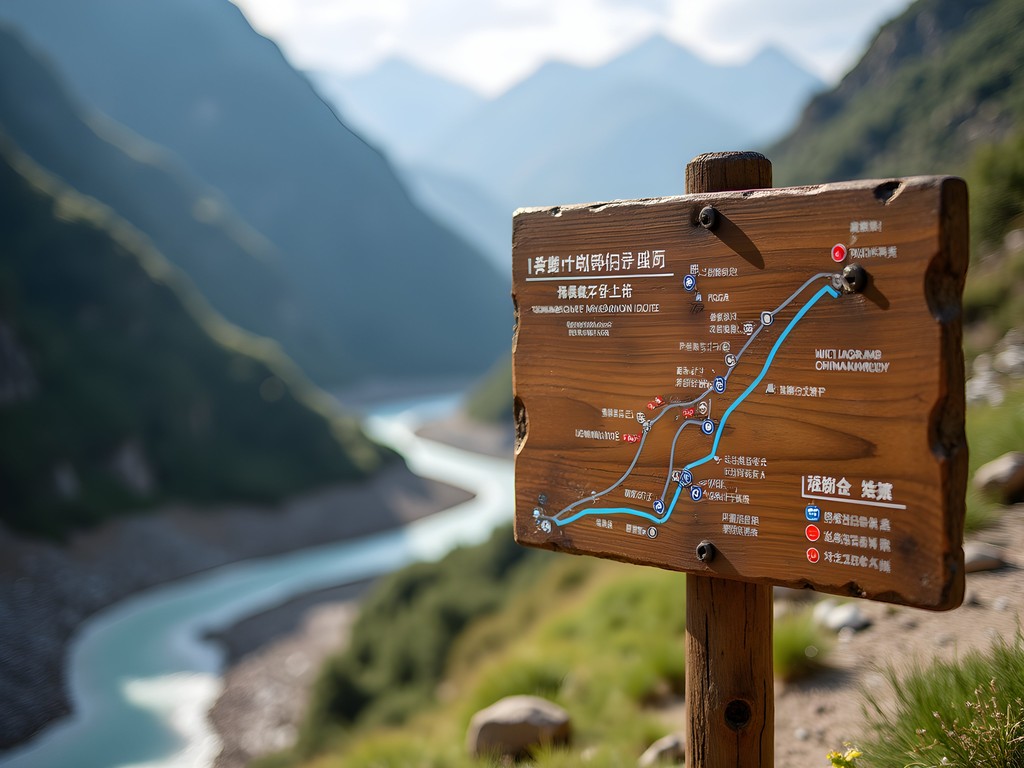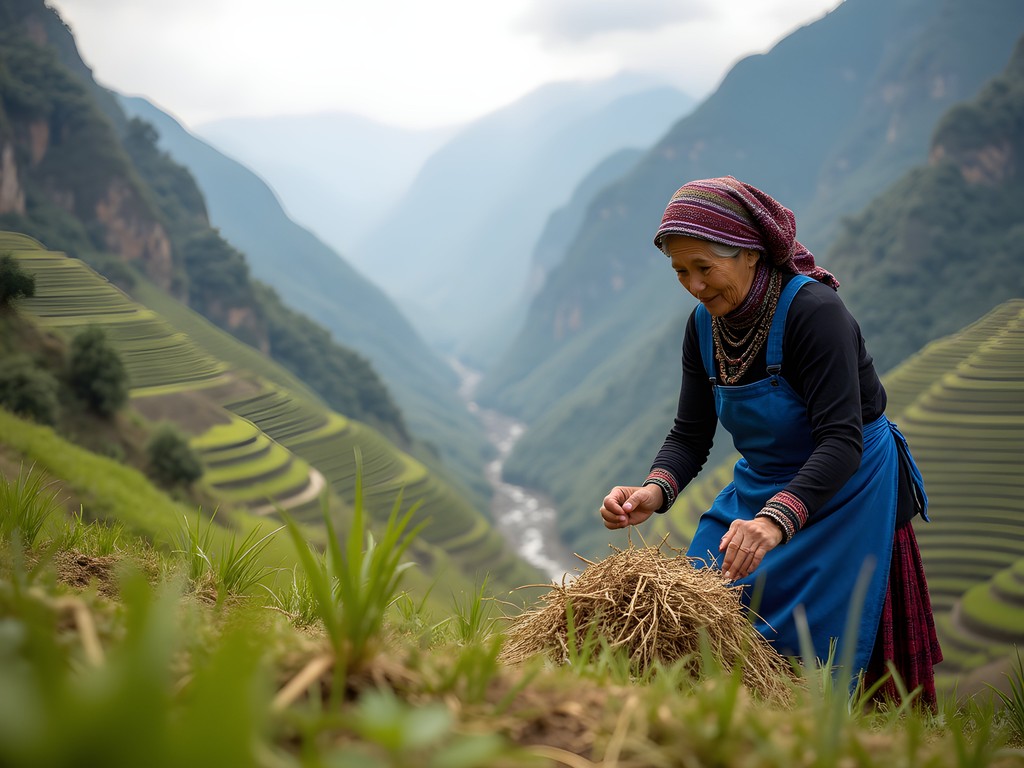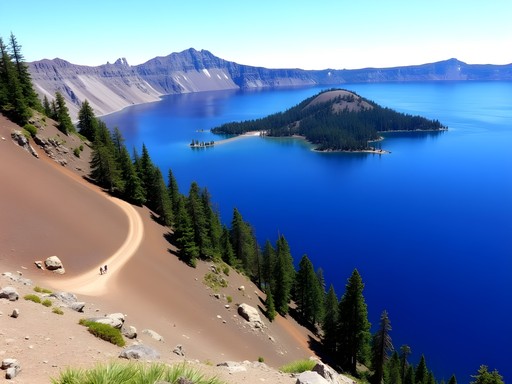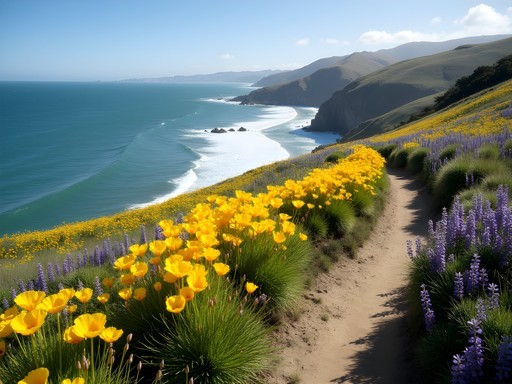Disclosure: This article contains affiliate links. We may earn a commission from purchases at no extra cost to you, which helps our travel content.
Standing at the trailhead of Tiger Leaping Gorge, I felt that familiar pre-match tension I used to experience before covering international cricket finals. Only this time, the stadium was one of nature's most spectacular formations—a 16-kilometer-long gorge carved by the mighty Jinsha River with 3,900-meter snow-capped mountains rising dramatically on either side. The legend claims a tiger once leaped across the narrowest point to escape a hunter, giving this wonder its evocative name. After decades documenting sporting traditions around the world, I've found that landscapes like these—where natural drama meets cultural mythology—offer the most profound adventures. This two-day trek through one of the world's deepest gorges isn't just a hike; it's an immersion into the ecological heritage of Yunnan province and the living traditions of the Naxi people who have called these vertiginous slopes home for centuries.
Planning Your Tiger Leaping Gorge Adventure
Tiger Leaping Gorge sits about 100 kilometers north of Lijiang, making the ancient town an ideal base for your hiking adventure. Most travelers, myself included, opt to spend at least a night in Lijiang's UNESCO-listed Old Town before heading to the gorge—a decision I highly recommend both for acclimatization and cultural context.
Getting to the trailhead requires some advance planning. While day tours exist, they barely scratch the surface of this magnificent landscape. For the full experience, arrange private transport (approximately 150-200 yuan) or catch the public bus from Lijiang's main station to Qiaotou town, where the high trail begins. I booked my transport through Mama Naxi's Guesthouse in Lijiang, a local institution that offers reliable arrangements and valuable hiking advice.
Before setting out, I spent an afternoon in Lijiang gathering supplies. The most essential purchase was my trekking poles, which proved invaluable during steep descents. While basic provisions are available at guesthouses along the route, I recommend carrying at least 1.5 liters of water, high-energy snacks, and weather-appropriate gear.
Permit requirements change occasionally, but as of my visit, hikers pay an 80 yuan entrance fee at the official checkpoint in Qiaotou. Keep this ticket accessible throughout your hike, as it may be checked at various points along the trail.

💡 Pro Tips
- Book accommodation in Lijiang for the night before and after your hike
- Start early (before 10am) to reach the halfway guesthouses before dark
- Arrange return transportation in advance or be prepared to negotiate with drivers at the end point
Day One: Qiaotou to Halfway House
The first day's trek covers approximately 17 kilometers from Qiaotou to the cluster of guesthouses at the halfway point. What strikes you immediately is how the trail doesn't ease you in—within the first hour, you'll encounter the infamous '28 Bends,' a series of steep switchbacks that test your endurance as they climb roughly 400 meters in elevation. This section reminded me of the grueling fitness drills I once watched the All Blacks rugby team perform in Wellington—challenging but purposeful.
As you labor upward through the bends, remember to pause regularly. Not just to catch your breath, but to witness the Jade Dragon Snow Mountain range emerging in increasingly spectacular fashion across the gorge. During these breaks, I found my compact binoculars invaluable for spotting distant waterfalls and observing the traditional farming practices on terraced fields below.
Beyond the 28 Bends, the trail levels somewhat, winding through pine forests and past small Naxi settlements. I encountered several local farmers leading horses loaded with supplies—a reminder that this isn't merely a tourist trail but a working route for communities who have traversed these mountains for generations.
Around the six-hour mark, the Halfway Guesthouse appears like an oasis. I chose the Naxi Family Guesthouse for its renowned terrace views and authentic home-cooked meals. After dropping my pack, I joined other hikers on the terrace, sharing trail stories over bowls of steaming noodles while watching the sunset transform the gorge into a canvas of purples and golds. The simple rooms cost around 50-80 yuan, with meals priced similarly—remarkable value for one of the most spectacular dinner views I've experienced in my travels.

💡 Pro Tips
- Take the 28 Bends slowly—it's the most challenging section of the entire hike
- Fill water bottles at the guesthouse before the Tea Horse Guesthouse, as there's limited access afterward
- Book your halfway accommodation in advance during peak season (April-May and September-October)
Day Two: Halfway House to Tina's Guesthouse
Day two begins with what many consider the highlight of the entire trek—sunrise over the gorge from your guesthouse terrace. I rose at 5:30 AM, wrapped in my down jacket, and watched in reverent silence as first light illuminated the peaks, creating that magical alpenglow photographers chase worldwide.
After a hearty breakfast of Naxi flatbread and eggs, I set off by 8 AM. The second day's terrain is gentler than the first, with more gradual elevation changes as the path weaves through bamboo groves and past cascading waterfalls. Approximately two hours from the halfway point, you'll reach what locals call the 'highest point'—a panoramic vista where both ends of the gorge are visible on clear days.
The trail then descends gradually toward the river, passing through small settlements where children might wave from doorways and elderly Naxi women in traditional blue aprons tend to terraced fields. These cultural encounters reminded me of similar moments in the Western Ghats of India, where traditional practices persist despite the encroachment of modern life.
Around midday, you'll reach a fork in the trail. The upper path continues to Tina's Guesthouse, where most hikers conclude their journey. The lower path descends steeply to the river at the Middle Rapids, where you can witness the famous rock from which the tiger supposedly leaped. This detour adds about two hours but offers a visceral appreciation of the gorge's depth and the river's raw power.
I chose to take the detour, and the perspective from below was worth every step of the steep climb back up. Standing beside the thundering rapids, feeling the spray on my face, I understood why this landscape has inspired awe for centuries. It's the same feeling I've experienced at Norway's fjords or Tasmania's craggy coastlines—a humbling reminder of nature's immense forces.

💡 Pro Tips
- Pack a headlamp for early morning starts or unexpected delays
- The descent to Middle Rapids is steep and can be slippery—consider skipping in wet conditions
- Carry small denominations of yuan for purchasing drinks or snacks from local vendors along the trail
Cultural Encounters Along the Trail
What distinguishes Tiger Leaping Gorge from many of the world's famous treks is the cultural dimension. This isn't wilderness in the purest sense—it's a cultural landscape where the Naxi people have carved out a life among these vertiginous slopes for centuries.
During my journey, I made a point of engaging with locals whenever possible, drawing on techniques I developed while documenting traditional sports across Asia. At a small farm midway through the second day, I stopped to rest beneath a walnut tree. The elderly farmer, noticing my interest in his terraced fields, invited me to join him for tea. Despite our limited shared vocabulary, we communicated through gestures about his agricultural practices—methods remarkably adapted to the steep terrain and seasonal water patterns.
The guesthouses along the route also offer windows into Naxi culture. At the Halfway House, I spent an evening learning about traditional Dongba pictographic writing from the owner's father, one of the few remaining scholars of this UNESCO-recognized script. He explained how the Naxi worldview is deeply tied to the surrounding landscape—the mountains aren't merely physical features but entities with spiritual significance.
For those interested in deeper cultural understanding, I recommend carrying a small field guide with information about Naxi traditions. While smartphone apps are convenient, physical books create natural conversation starters with locals curious about your interest in their heritage.
What struck me most was how the Naxi approach to land stewardship mirrors conservation practices I've observed in New Zealand and Costa Rica—working with rather than against natural systems. As climate change threatens traditional ways of life worldwide, these cultural encounters along the trail felt particularly poignant and valuable.

💡 Pro Tips
- Learn a few basic Mandarin phrases before your trip—even simple greetings go a long way
- Ask permission before photographing local people or their homes
- Support local economies by purchasing handicrafts or produce directly from villagers along the route
Practical Considerations and Safety
Tiger Leaping Gorge demands respect. While not technically difficult, the trail presents real hazards including steep dropoffs, loose rocks, and rapidly changing weather conditions. During my career covering outdoor sporting events, I've witnessed how quickly conditions can deteriorate in mountain environments.
First and foremost, check weather forecasts diligently. Spring (April-May) and autumn (September-October) offer the most stable conditions, with clear skies and moderate temperatures. Summer brings monsoon rains that can trigger landslides, while winter sees icy conditions at higher elevations. I hiked in late April and experienced perfect conditions—cool mornings, comfortable daytime temperatures, and minimal precipitation.
Proper footwear is non-negotiable. My hiking boots provided essential ankle support and traction on loose sections. While some younger hikers tackle the trail in trainers, I wouldn't recommend it, particularly for the steep descents and potentially muddy sections.
Cell service exists but is spotty. I recommend downloading offline maps through apps like Maps.me before your journey. For extra security, consider carrying a basic first aid kit and telling someone your itinerary before departing.
The altitude deserves mention—the trail ranges from approximately 1,900 to 2,700 meters above sea level. While not extreme, those coming directly from sea level may experience mild altitude symptoms. Spending a day or two in Lijiang (2,400m) before hiking helps with acclimatization.
Finally, be mindful of the commercial development occurring around the gorge. The Chinese government has ambitious tourism plans for the region, and some sections now feature concrete paths and safety railings. These developments have made certain viewpoints more accessible but have altered the wilderness experience in places. For now, the high trail remains relatively authentic, but this balance may shift in coming years.

💡 Pro Tips
- Check weather forecasts carefully—avoid hiking during or immediately after heavy rainfall
- Bring cash as there are no ATMs along the trail
- Consider hiring a local guide if you're concerned about navigation or want deeper cultural insights
Final Thoughts
As I boarded the bus back to Lijiang, muscles pleasantly fatigued from two days on the trail, I reflected on how Tiger Leaping Gorge embodies what I've come to value most in my travels—the intersection of natural grandeur with living cultural traditions. This trek isn't merely about conquering a trail or capturing Instagram-worthy vistas (though you'll certainly get those). It's about experiencing a landscape that has shaped and been shaped by human communities for centuries. The gorge faces an uncertain future as tourism development accelerates throughout Yunnan. My advice? Don't wait. Make the journey soon, approach it with respect for both the natural environment and local cultures, and you'll be rewarded with an experience that ranks among China's most spectacular outdoor adventures. As we say in cricket, this one's a century knock—a perfect score in every way.
✨ Key Takeaways
- The two-day trek offers an ideal balance of challenging hiking and cultural encounters
- Spring and autumn provide the most stable weather conditions for hiking
- Staying in family-run guesthouses enhances the cultural experience
- Development is changing parts of the gorge—visit sooner rather than later
📋 Practical Information
Best Time to Visit
April-May and September-October
Budget Estimate
400-600 yuan (excluding transportation to/from Lijiang)
Recommended Duration
2 days/1 night minimum
Difficulty Level
Moderate
















Comments
backpack_adventures
Did this hike last month and your guide was super helpful! One thing to add - the bus schedule from Lijiang has changed. First bus now leaves at 8:30am instead of 7:30am, which makes it tight to start the hike on the same day if you're coming from Lijiang. We ended up staying in Qiaotou overnight and starting fresh the next morning, which worked out better anyway. Also, the Halfway House now takes WeChat Pay which was convenient. Their rooftop terrace is still the perfect place to watch the sunset over the mountains!
Amit Sullivan
Thanks for the schedule update! That's really helpful info for other travelers. Glad you enjoyed the hike!
photozone
That shot of the gorge at sunrise is incredible! What camera setup are you using?
Amit Sullivan
Just my trusty Sony A7III with the 24-70mm f/2.8 lens. The light does all the heavy lifting at that time of morning!
china_wanderer
Stayed at Naxi Family Guesthouse instead of Halfway House - quieter and amazing homemade food! Try their walnut pancakes if you go back.
trekking_newbie
Going to Lijiang next month! How physically demanding is this hike really? I'm reasonably fit but not a hardcore hiker.
Jean Wells
If you're reasonably fit, you'll manage fine! The first day's climb up the 28 Bends is the most challenging part - take it slow, plenty of water breaks. After that, it's mostly undulating terrain with spectacular views as your reward. My trekking poles were lifesavers on the steep descents.
trekking_newbie
Thanks Jean! That's reassuring. Will definitely look into getting some trekking poles before I go.
Jean Wells
Excellent breakdown of the Tiger Leaping Gorge trek, Amit. Your cricket analogy resonated with me - there's definitely that same anticipatory tension before embarking on a significant hike. I completed this trek last autumn and would add that seasonal timing is critical. October offered perfect conditions: moderate temperatures, minimal rainfall, and spectacular visibility. One observation: the Halfway House has indeed improved their facilities since my first visit in 2018. Their hot showers are now reliable, and the terrace views remain unmatched for sunset viewing. I'd suggest hikers allocate extra time at Tina's to explore the middle gorge section - the trails down to the river provide a completely different perspective of the gorge's scale that photos simply cannot capture. Did you encounter many other hikers during your March visit? I'm curious about shoulder season crowd levels as I'm considering a return trip.
Amit Sullivan
Thanks for the thoughtful comment, Jean! March had fewer hikers than I expected - maybe 10-15 people per day on the trail. The weather was a bit unpredictable though - we had one gloriously clear day and one misty morning that cleared by noon. October definitely sounds ideal for your return trip!
photozone
Those pics of the gorge are stunning! Did you take the high trail or low trail?
Amit Sullivan
Thanks photozone! I took the high trail - much more scenic and less crowded. The views from 28 Bends were worth every drop of sweat!
photozone
Good call! Did the same last year. Those 28 Bends nearly killed me though 😅
travelbuddy99
How's the food at Halfway House? Worth staying there vs other guesthouses?
Sage Dixon
Not Amit, but I can tell you the food at Halfway House is simple but delicious! Their Naxi fried rice and vegetable dishes were perfect after a day of hiking. The real reason to stay there though is the terrace view - absolutely unbeatable for sunset.
beachphotographer
Wow! I've always been more of a beach person but this might convert me to mountains! Quick question - how physically demanding is this hike really? I'm reasonably fit but not a hardcore trekker. Could I handle it?
springway
Not Amit but I'd say it's moderate difficulty. The 28 bends section is tough (basically switchbacks uphill) but you can take it slow. My girlfriend isn't a regular hiker and she managed fine. Just bring good shoes and plenty of water!
beachphotographer
Thanks so much! That's reassuring. Maybe I'll give mountains a chance after all 😊
vacationstar
Those photos are STUNNING! The one with the gorge at sunrise made me immediately check flight prices to China lol. Adding this to my bucket list right now!
hikergirl42
Just booked my trip to Lijiang after reading this! Can't wait!
Venture X
Premium card with 2X miles, $300 travel credit, Priority Pass